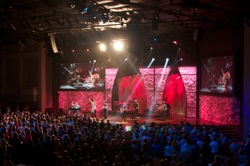
Dancing About Architecture: Part 1

I had a great time at Gurus 2012 in Chicago. It was great to put faces to Twitter names and emails. Some of my favorite conversations were just talking about music, and now that our monitor console upgrades are finished I want to start dipping back into the topic of music.
Writing about music is like dancing about architecture.
– Author Unknown
If you have a music background some of this might seem simple and obvious, but I run across a lot of guys who are passionate about audio and music but missing a music background to where you sometimes wonder if they get music at all. You can definitely LOVE music even if you don’t get it, but if you don’t get it, it’s probably an uphill challenge to mix music. So maybe some of this stuff might help the non-music guys get it while also potentially giving some of the music guys some new strategies.
I wasn’t a music major in college, but I spent most of my free time focused on my band and took some classes in the music department whenever I could. Some classes were music technology related, but some were more theory oriented. One of the classes that could probably benefit a lot of audio guys, though, was a very basic class that I think might have even been called Intro to Music; it was the kind of elective non-music majors would take if they had any music background because it was an easy A. It was essentially Music Appreciation 101.
I took this well over 15 years ago, but the one thing that really sticks out to me about the class was it involved listening to a lot of music–I know, go figure. An ongoing part of that listening was to dissect the music we were listening to. We’d chart song sections and identify the different instruments and what they were playing.
This is a great exercise for any mix engineer to do, but it is especially great for newer engineers. We were listening to a lot of classical music in the class which can be more complex than today’s popular music, but I’d recommend you keep this kind of thing as practical as possible in the beginning and use music that you’re either currently mixing or that’s at least in the style of what you’re doing. Then you should move into classic and timeless music from any genre you can get your hands on.
You can really go deep in analyzing music, but as you’re listening, I have some things I’d like you to listen for to start with.
In any music, the variety of instruments performing each have a purpose or function. In most modern music I like to split instruments into three main components: melody, rhythm, and bed. I’ve seen books and other guys who split music up even further, but I say let’s keep it simple with three things because we’re primarily talking about live sound here where time is a factor and simple is a good friend. As you’re listening to music your mission, should you choose to accept it, is to pick out the instruments you hear and place them amongst these three components. I realize what these components are might seem pretty obvious to some of you, but let’s get on the same page and look at these a little closer:
– Melody
The best way to identify melody is to pick out the stuff you can either hum or sing along with. Vocals are a prime candidate here, but melody also includes instrumental hooks and lines. This is the stuff that gets stuck in a listener’s head. Melody is what we give the listener to take home for better or worse. Sometimes melody might be called lead, but I’m going to stick with melody because there can be multiple melodies occurring in a song that are not lead parts.
– Rhythm
Rhythm is anything that makes you tap your feet, sway, or groove to the music. The obvious example here would be drums, but bear in mind that just about any instrument on stage can dictate rhythm; for example, remember that a piano is actually a percussion instrument.
– Bed
Bed is everything that’s left. This is typically the wash of sound that contributes to the texture or sound of a song. Think sustained or droning instruments. Keyboard pads are a prime contender here, but things like guitars can also contribute to the bed. If someone on stage is mainly just hitting chords, they might simply be part of the bed. The bed can be tricky because it’s often not as much about everything in it being heard as it is about everything contributing.
If the concept of splitting music into components is new to you, I recommend you go grab some of your favorite albums and start picking some of your favorite songs apart. Now I realize analyzing art doesn’t always come naturally for everybody, and some of you might even have reservations about clinically dissecting your favorite songs. So here’s a tip: The idea isn’t to over-analyze what’s going on; the idea is to gain a better understanding of what’s going on in order to better appreciate the magic of those songs you know and love. This better understanding can then serve you in the future as you mix and try to reconstruct the types of feelings and emotions music has given you. Doing these kinds of activities has never diminished my passion for music and has only made me a stronger engineer.
In the next part, I’ll take our song components and get practical with them in terms of our mixes.

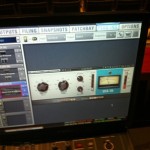 Next Post
Next Post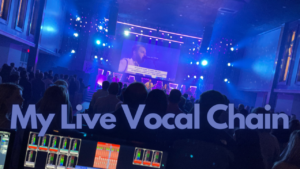

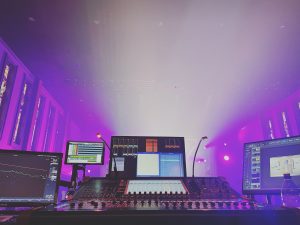
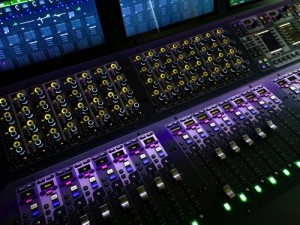



This is a great idea. When I was working in the studio early in my career I was challenged to do this. I took it one step further and learned an instrument and took music theory and ear training classes. It really helped me become a better tracking/mix engineer.
I think allot of musicians could benefit from what you have to say too Dave. I like to do these exercises with the bands I work with so we are all on the same page.
Mike
Just fyi, the quote is from the movie “Playing By Heart” and the line is actually “Talking about love is like dancing about architecture”. But the same applies to music!
I think the quote is older than that movie. The music quote probably appeared in the late 70’s/early 80’s and is often credited to Martin Mull, however, there isn’t definite consensus on this.
http://quoteinvestigator.com/2010/11/08/writing-about-music/